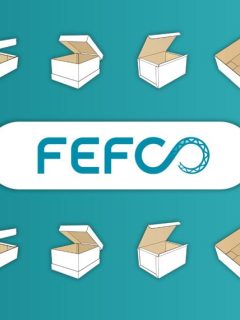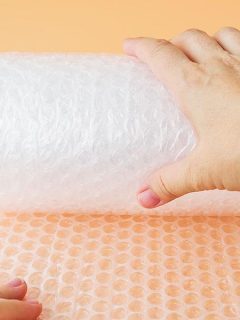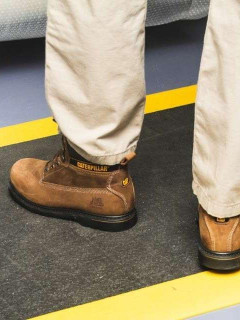Anyone who regularly finds themselves at a packing table knows that cardboard and paper are surprisingly versatile packaging materials. They are easy to recycle and give your package a durable look. Corrugated or flat, brown or white, crepe or kraft… there are so many ways to pack and protect with paper. Do you know exactly what each type is used for? Take a look below and find out about all the different uses for paper.
1. Five ways to protect with paper
A European study1 shows that 52% of consumers consider cardboard to be the most environmentally friendly packaging material, so cardboard (and by extension paper too) is a promising basis for packaging your products.
Another figure from the same study is that 64% of consumers think that retailers and brands are still not doing enough to use environmentally friendly packaging materials. So there’s still work to be done. And you can do your bit! Find out below about all the different types of paper protection and how you can use them.
1.1 Fill in the gaps
Inside a crate, you should always make sure that your products are securely wedged.By properly filling all the empty spaces, you greatly reduce the risk of damage. Padding paper is the best solution.You can fold the paper a few times and then insert it into the empty spaces around your product.A second option is to use paper crimp.This material fills every conceivable space and corner in your crate.In addition to being effective, it is also very original: the coloured variants immediately give your packaging a unique look.And that’s hugely important for the customer experience!
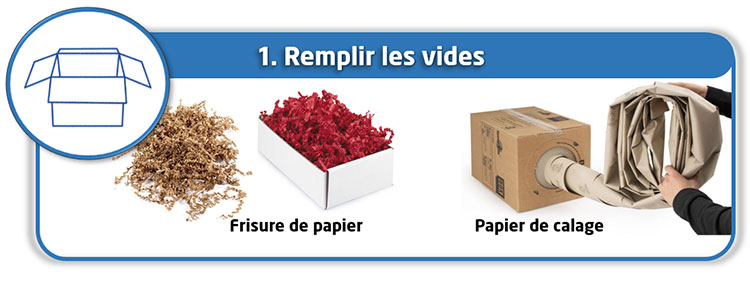
1.2 Absorb shocks
Your fragile products need to be packed with an extra layer of protection, preferably one that can absorb shocks well.How do you do this with paper? Firstly, you can opt for corrugated cardboard.The corrugations absorb shocks optimally.Secondly, you can pack a product with embossed wrapping paper.It is softer than corrugated cardboard and can therefore be folded around irregularly shaped products more easily. Crepe paper bobbins are a special case in this category:they are ideal for packing anything round.Think of pipes, profiles, furniture legs, etc.
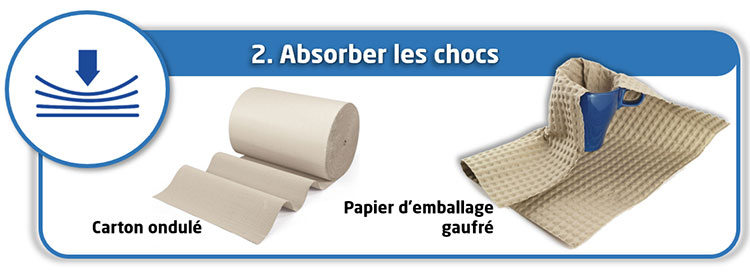
1.3 Prevent scratches
Protecting with paper is also possible to avoid scratches. For this, you should use tissue paper or wrapping paper. Tissue paper is the softest and is therefore best suited for very fragile surfaces. For example, glass, ceramics, leather goods, etc. Want colour? Then tissue paper is also the ideal solution! Wrapping paper
, on the other hand,
is much stronger and is better suited for packing heavier products (with a less fragile surface). You can even use it as extra cushioning inside your crate.
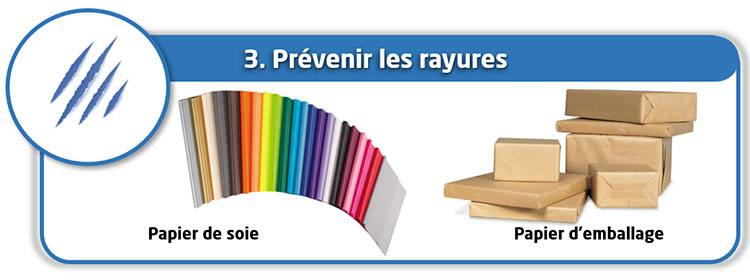
1.4 Separate products
Now we turn to cardboard sheets. A corrugated sheet is more versatile than you might think. You can use it to separate your products horizontally. This makes it easier to stack inside the crate and gives the package more strength. To be more shock resistant, you should use a honeycomb sheet. These “cells” are surprisingly strong and therefore make a perfect mattress. In addition to being a divider, you can also use it as a backer sheet or cover.
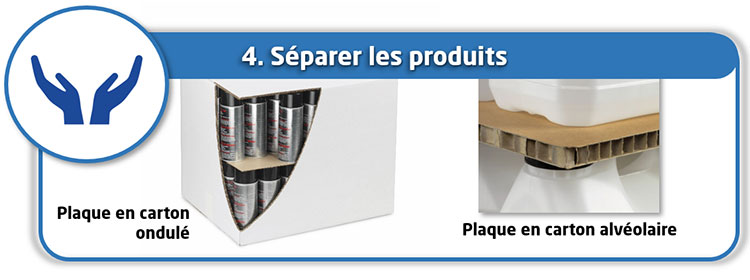
1.5 Protecting corners
This final application for protecting with paper brings us to the corners of your products. Corners are often the most vulnerable, quickly dented, broken or scratched. Don’t despair, we have the solution! Cardboard corners have been designed specifically for this type of protection. To completely cover the edges of your products, there are also L-profiles available. The corrugated cardboard they are made from is very strong and absorbs impact like no other.
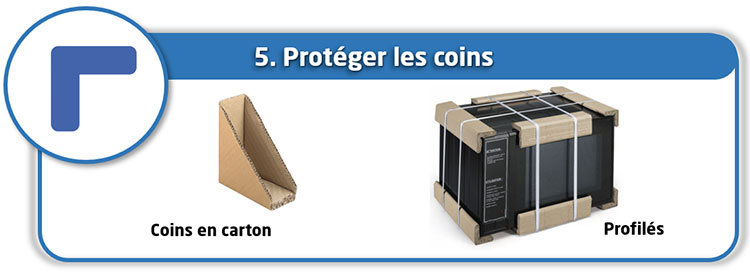
2. What are the advantages of wrapping and protecting with paper?
Is therea roll of wrapping paper or corrugated cardboard already on your packing table? For those who still need convincing, we list the 5 most important advantages of paper here. Pack or protect with paper? I wouldn’t hesitate!
2.1 Natural look
Paper and cardboard immediately add value to your packaging: they give your package a more natural look. Does your company aim to have 100% environmentally friendly packaging? Then combine the paper protection inside your package with a cardboard box and paper tape. A perfect combination! And it’s convenient for your customer, too: they can sort it all together, without having to worry about any special waste sorting.
2.2 Recyclable
Because of its natural character, paper is easier to recycle. After use, you can sort it and give it a new life. Did you know that almost all RAJA’s paper protection materials can be recycled? Since the basis of paper is a renewable resource (= wood fibres), the environmental impact is lower and you help to close the raw material cycle. In addition to recycling, you can also let the paper compost.
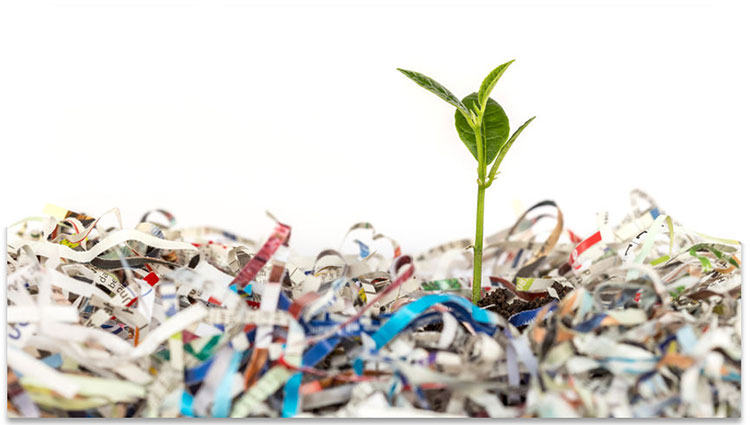
2.3 Safe
[Do you ship electronics? Then it’s good to know that paper is always anti-static, so there’s no risk
of
electrostatic discharges damaging your electronics. Paper is also generally free of chlorine and acids, making it ideal for packaging printed documents and photos, among other things. And for those shipping metal parts, there’s even corrosion-resistant paper (coated with paraffin to prevent rust).2
2.4 Flexible
Paper is flexible and easy to handle: this means it can be folded into the desired shape without any effort, so whatever the shapes of your product or packaging, it is almost always possible to protect it with paper.
2.5 Resistant
Paper and cardboard are strong materials that can protect the sharpest objects without losing strength or effectiveness, however, air cushions or bubble wrap can be torn and deflated by sharp objects, causing them to lose their effectiveness.
 [1 Pro Carton study. European Consumer Packaging Perceptions study. 20202 Good to know: Waxed kraft paper cannot be sorted with normal paper and therefore belongs to the residual waste. If in doubt, ask your local waste disposal partner for advice
[1 Pro Carton study. European Consumer Packaging Perceptions study. 20202 Good to know: Waxed kraft paper cannot be sorted with normal paper and therefore belongs to the residual waste. If in doubt, ask your local waste disposal partner for advice











